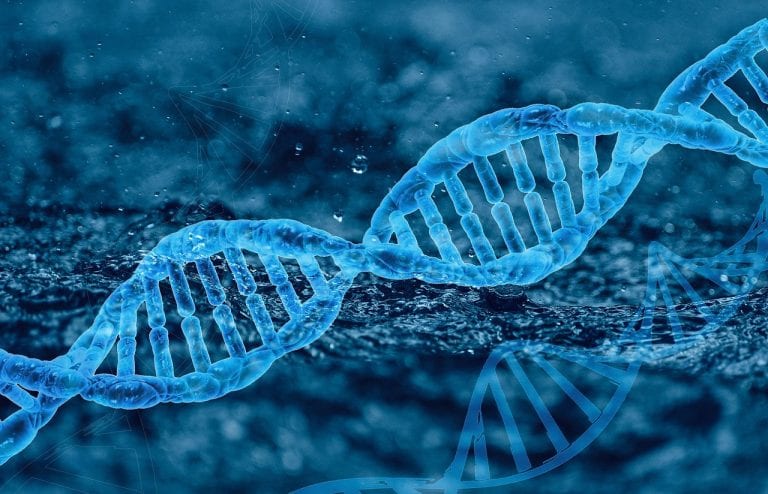
A DaTscan specifically examines the dopamine transporters in the brain. Radiopharmaceutical used in the DAT scan attaches itself to the dopamine transporters in the brain. These transporters are responsible for reabsorbing dopamine after it has been released into the synapses. After the injection, a gamma camera is used to capture images of the brain. The gamma camera detects the radiation emitted by the radiopharmaceutical, allowing visualization of the distribution of dopamine transporters in the brain.
The test, which takes about 15 minutes, involves taking three small skin samples. These skin biopsies then go to a lab and are evaluated for a specific protein (phosphorylated alpha-synuclein) found in individuals with Parkinson’s disease.
Parkinson’s Disease genetic testing is available through our clinic and may aid in a more accurate diagnosis.


Non-pharmacologic treatments for Parkinson’s disease can be beneficial in managing symptoms and improving overall quality of life. While medication remains the primary treatment approach, the following non-pharmacologic interventions may be used in conjunction with other therapies to optimize treatment plan.
Parkinson’s disease medications are available to help manage symptoms and improve the quality of life for individuals living with the condition.
Some common FDA approved medications used in the treatment of Parkinson’s disease are:
Levodopa: Levodopa is the most effective medication for controlling the motor symptoms of Parkinson’s disease. It is converted to dopamine in the brain, compensating for the dopamine deficiency that is characteristic of the condition.
Carbidopa/Levodopa: Carbidopa is often combined with levodopa to enhance its effectiveness and reduce side effects. It helps prevent the breakdown of levodopa before it reaches the brain, allowing for a lower dosage of levodopa.
Dopamine agonists: These medications mimic the effects of dopamine in the brain. They stimulate dopamine receptors and can be used either as standalone treatments or in combination with levodopa. Common examples include pramipexole, ropinirole, and rotigotine.
MAO-B inhibitors: Monoamine oxidase-B (MAO-B) inhibitors help increase dopamine levels by inhibiting the enzyme that breaks it down in the brain. Selegiline and rasagiline are two commonly prescribed MAO-B inhibitors.
COMT inhibitors: Catechol-O-methyltransferase (COMT) inhibitors prolong the effects of levodopa by inhibiting the enzyme that breaks it down. Entacapone and tolcapone are examples of COMT inhibitors.
Anticholinergic medications: These medications can help control tremors and muscle stiffness by blocking the action of acetylcholine, a neurotransmitter involved in motor control. They are typically used in younger patients with tremor-dominant Parkinson’s disease.
Clinical trials play a crucial role in advancing our understanding of Parkinson’s disease and developing new treatments. These research studies involve human participants and are conducted to evaluate the safety and effectiveness of new interventions, such as medications, surgical techniques, or therapeutic approaches. These trials follow strict protocols and guidelines to ensure the safety and ethical treatment of participants.
Clinical Trials
Deep Brain Stimulation (DBS): DBS is a widely used surgical procedure for Parkinson’s disease. It involves implanting electrodes into specific areas of the brain, such as the subthalamic nucleus or globus pallidus. These electrodes are connected to a pulse generator implanted under the skin near the collarbone. The generator delivers electrical impulses to the targeted brain regions, which help regulate abnormal brain activity associated with Parkinson’s disease. DBS can effectively reduce motor symptoms, such as tremors, rigidity, and bradykinesia.
A neurological disorder that causes involuntary shaking movements in your hands, head, trunk, voice or legs.
Dystonia is a neurological movement disorder characterized by involuntary (unintended) muscle contractions that cause slow repetitive movements or abnormal postures that can sometimes be painful.
A neurological movement disorder that occurs from damage to certain nerve cells in the brain. PSP can affect body movements, walking and balance, eye movements, mood, behavior, and thinking.
A rare neurodegenerative disorder that affects the autonomic nervous system and certain parts of the brain. It is characterized by a progressive loss of function in multiple systems of the body, including the cerebellum, basal ganglia, and autonomic nervous system.
A progressive neurodegenerative disorder characterized by abnormal protein deposits called Lewy bodies in the brain. Individuals with DLB may experience significant variations in attention, alertness, and thinking abilities throughout the day, hallucinations, Parkinsonism, and REM sleep behavior disorder.
We conduct quarterly seminars educating attendees about Parkinson’s disease prevention, treatments and research programs.

What Choices Do I Have?
You are at no obligation to use this website or sign-up for any clinical research studies. If you do not want to participate, you should not provide any information or register as a member of a study.
How Is Information Collected About You Used?
We may use information we collect about you to:
• Respond to your inquiries via the Contact Us page
• Send you follow-up email announcements and reminders if you Opt-in
Do We Share Your Information with Anyone?
No, we will not disclose any Personal Information about you. We do not make your Personal Information available to third parties for their marketing purposes.
How Do We Secure and Retain Your Information?
We have strict technical, physical, and administrative safeguards to protect the Personal Information that we collect.
Have a Question? Contact Us
Please reach out to us via the Contact Us pages if you have any questions about this Privacy Policy.